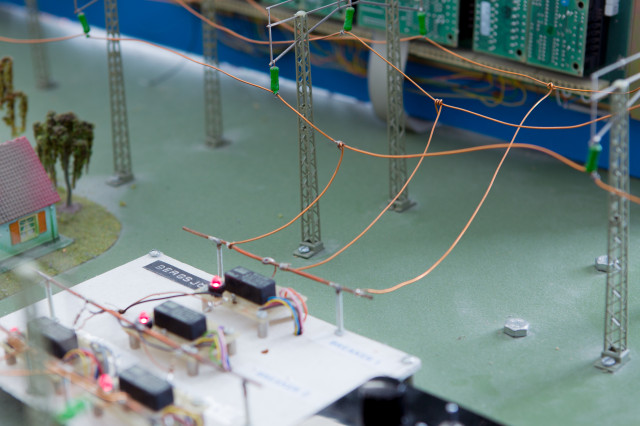- implantation, transplantation, lagstiftning
- passiva/aktiva implantat, EU, FDA, kvalitetsaspekter
- biomaterial för implantat
- ortopediska implantat
- passiva implantat för hjärta och kärl
- aktiva implantat (konstgjorda hjärtan, pacemaker mm.)
- implantabla stimulatorer och sensorer
- neurala proteser
- tissue engineering
HL2005 Implantat och biomaterial 6,0 hp

Implantat spelar en allt större roll i sjukvården. I Sverige implanteras årligen ca 140 000 linser 25 000 höftleder, 7 000 pacemakers och 3 000 hjärtklaffar. Exempel på framgångsrika svenska företag är Pacesetter, Nobelpharma och Pharmacia. Kursens behandlar tekniska och kliniska aspekter på implantat med tyngdpunkten på biomaterial.
Information per kursomgång
Information för HT 2026 Start 2026-08-24 programstuderande
- Studielokalisering
KTH Flemingsberg
- Varaktighet
- 2026-08-24 - 2026-10-23
- Perioder
HT 2026: P1 (6 hp)
- Studietakt
50%
- Anmälningskod
10343
- Undervisningsform
Normal Dagtid
- Undervisningsspråk
Engelska
- Kurs-PM
- Kurs-PM är inte publicerat
- Antal platser
Ingen platsbegränsning
- Målgrupp
- Ingen information tillagd
- Planerade schemamoduler
- [object Object]
- Schema
- Schema är inte publicerat
- Del av program
- Ingen information tillagd
Kontakt
Kursplan som PDF
Notera: all information från kursplanen visas i tillgängligt format på denna sida.
Kursplan HL2005 (HT 2024–)Innehåll och lärandemål
Kursinnehåll
Lärandemål
Implantat spelar en allt större roll i sjukvården. I Sverige implanteras årligen ca 60 000 linser 7000 höftleder, 4000 pacemakers och 2000 hjärtklaffar. Exempel på framgångsrika svenska företag är Pacesetter, Nobelpharma och Pharmacia. Kursens behandlar tekniska och kliniska aspekter på implantat med tyngdpunkten på biomaterial.
Kursdeltagarna skall efter genomgången kurs kunna:
1. Redogöra för terminologin inom områdena transplantation, biomaterial och implantat, samt även kunna redogöra för lagar och regleringar som gäller för transplantationer och implantat.
2. Redogöra för egenskaper hos och funktion och klinisk användning av biomaterial och implantat, samt fysiologin och de fysiologiska interaktioner som styr funktionen.
3. Reflektera över och lösa problem relaterade till funktionen hos implantat och biomaterial genom att tillämpa fundamentala fysikaliska och fysiologiska principer.
4. Skärskåda ett implantat eller biomaterial och dess tillämpning.
Kurslitteratur och förberedelser
Särskild behörighet
120 hp inom naturvetenskapliga eller tekniska ämnen. 4 hp inom anatomi och/eller fysiologi samt 4 hp ellära. Engelska B/6.
Kurslitteratur
Examination och slutförande
Betygsskala
Examination
- RED1 - Presentation av eget arbete, 1,0 hp, betygsskala: P, F
- TENA - Tentamen, 5,0 hp, betygsskala: A, B, C, D, E, FX, F
Examinator beslutar, baserat på rekommendation från KTH:s handläggare av stöd till studenter med funktionsnedsättning, om eventuell anpassad examination för studenter med dokumenterad, varaktig funktionsnedsättning.
Examinator får medge annan examinationsform vid omexamination av enstaka studenter.
När kurs inte längre ges har student möjlighet att examineras under ytterligare två läsår.
Övriga krav för slutbetyg
TEN1 - Skriftlig tentamen, 5,0 hp, betygsskala: A, B, C, D, E, FX, F
RED1 - Presentation av individuellt arbete, 1,0 hp, betygsskala: G/U
Examinator
Etiskt förhållningssätt
- Vid grupparbete har alla i gruppen ansvar för gruppens arbete.
- Vid examination ska varje student ärligt redovisa hjälp som erhållits och källor som använts.
- Vid muntlig examination ska varje student kunna redogöra för hela uppgiften och hela lösningen.
Ytterligare information
Kursrum i Canvas
Ges av
Huvudområde
Utbildningsnivå
Övrig information
Begränsat deltagarantal.